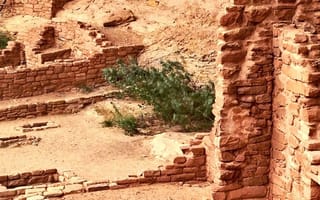Archaeologists poring over historic data can now add artificial intelligence and deep learning to their toolkit, reports TechRepublic. Deep learning techniques are accelerating the rate at which archaeologists discover new archaeological sites and other potential locations of interest.
The ubiquity of remote sensor data in this field cuts down on the manual work once relegated to humans. Image recognition via machine learning also helps archaeologists shift energy from identification to verification, according to the outlet.
"I found that the way that it's been done before could probably be improved with the use of deep learning," Iris Kramer, a computer science Ph.D. student at the University of Southampton, explained to TechRepublic..
A holder of bachelor's and master's degrees in archaeology, Kramer quickly observed that image recognition powered by deep learning algorithms could have an outsized impact in her field.
"My interest in deep learning came at the end of my master's really, when I did my dissertation about automated detection of archeology on remote sensing data. I saw deep learning emerging and if self-driving cars could be on the road, then why couldn't we maybe do this with archeology?"
"My interest in deep learning came at the end of my master's really, when I did my dissertation about automated detection of archeology on remote sensing data," Kramer said. "I saw deep learning emerging and if self-driving cars could be on the road, then why couldn't we maybe do this with archeology?"
Determined to realize the technology’s potential, Kramer enrolled in a Ph.D. program that allowed her to study both machine learning and archaeology, getting herself up to speed with coding during the year between her masters and Ph.D.
Flash forward to the present where Kramer’s research aims to improve how archaeologists use 3D laser scanning technology LiDAR.
"We have new detections of possible sites, but also we can now, rather than just search for one object and make a whole group based approach for this one object; we can now easily switch to a new object if we want to detect a new type of site that we're interested in," Kramer said to TechRepublic..
"It's like a tool for desk-based assessment," Kramer added. "If they [archaeologists] are interested in certain objects; if there is enough of those sites, then this will just be another way to find new sites, and that is just for remote sensor data."



